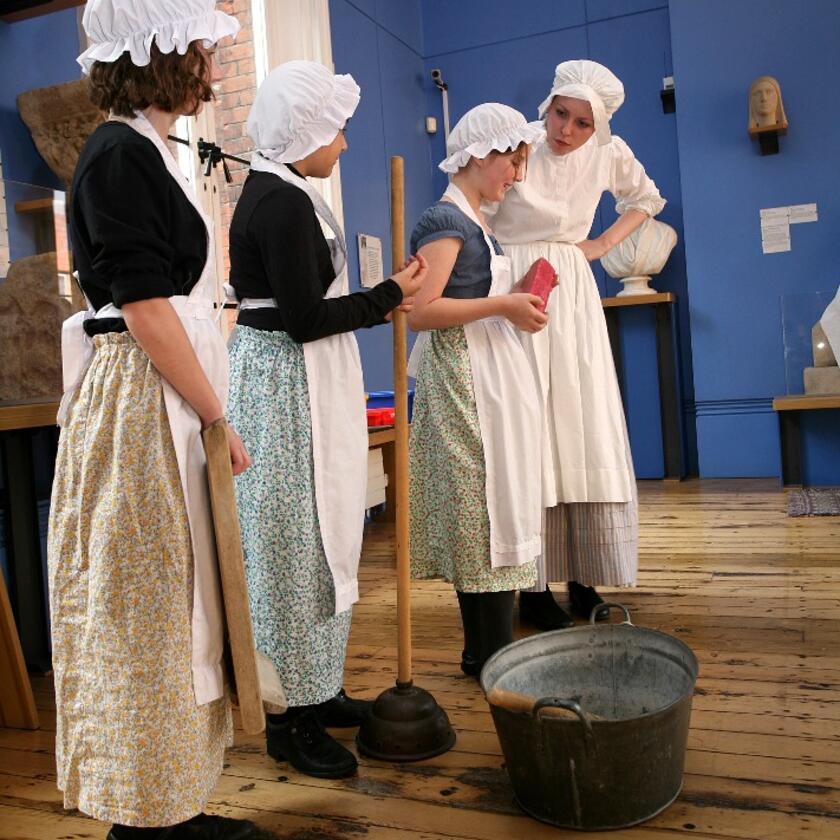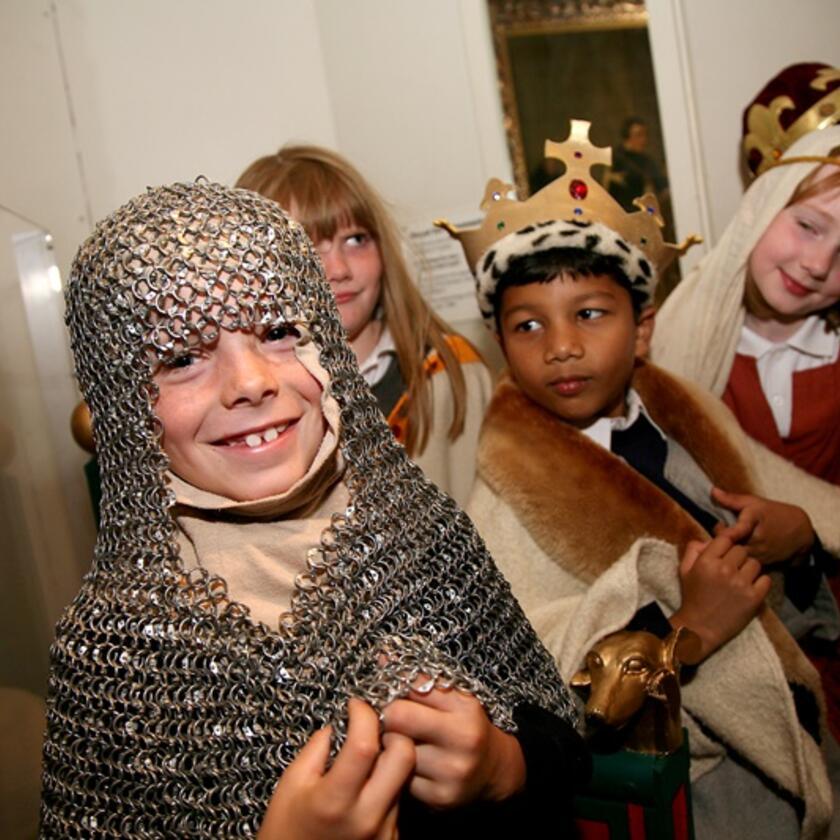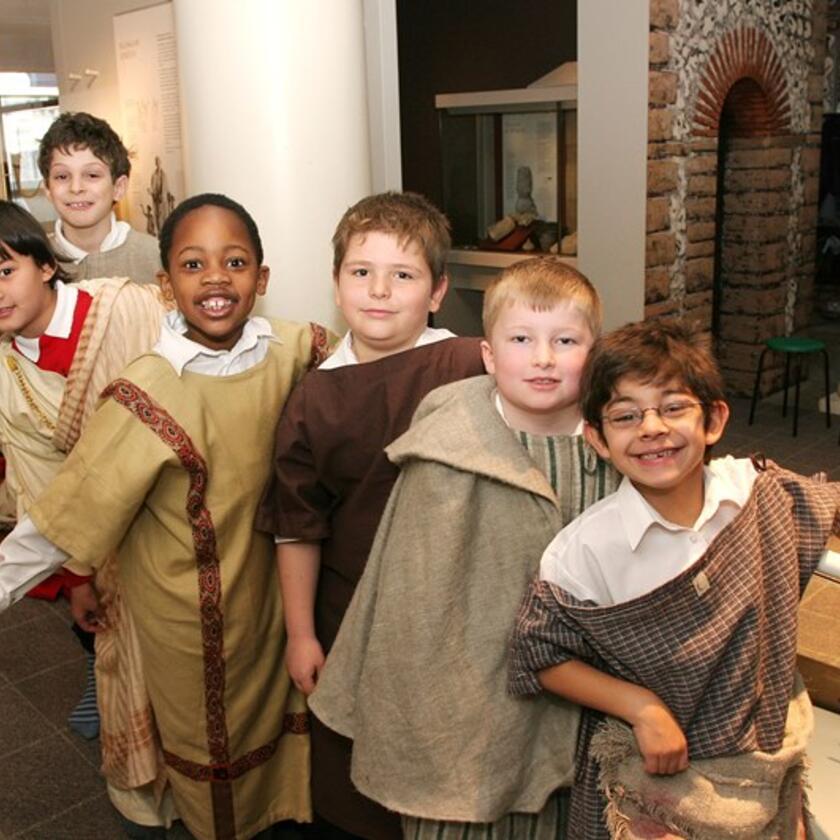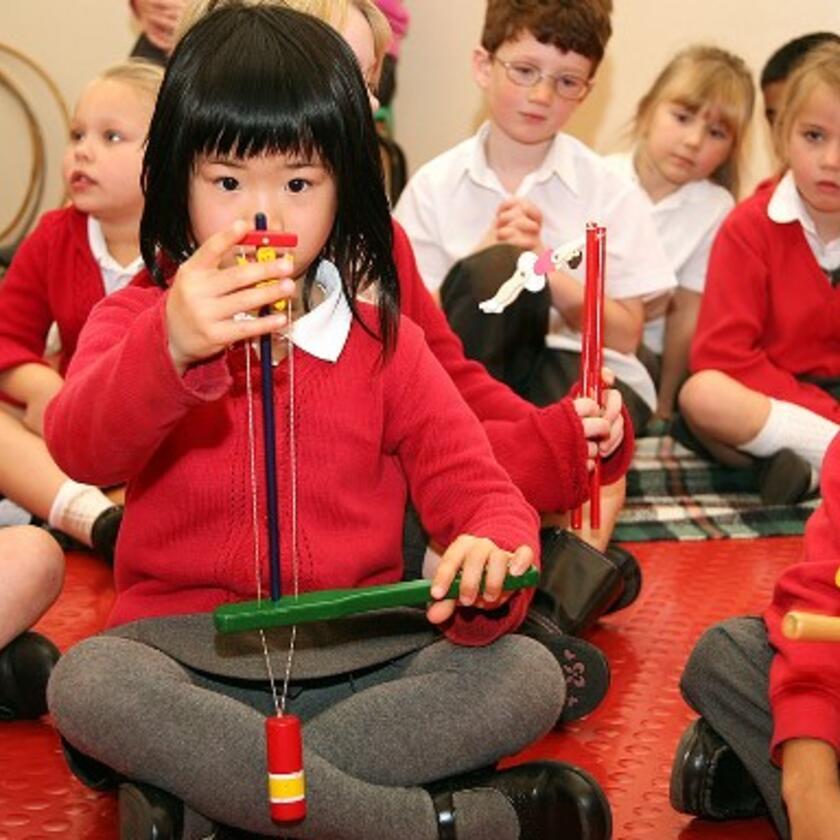There is a simple saying that perfectly summarises the aim and the power of museum learning:
“I hear and I forget.
I see and I remember.
I do and I understand.”
- Confucius
This is the truth we live by every day as museum educators, whether we create a loan box of Museum objects that children can see and touch in school, or we develop and run school sessions in the Museum.
Nowadays we can search the internet and find pretty much anything we want to know and children are particularly expert at this. However, all this flood of information and images is just skin deep: “I hear and I forget” should be updated for the twenty-first century as “I google it and I forget”!
Everything we do with children at Reading Museum is aimed at getting them to experience history rather than learning facts. We try to bring the past to life in a fun and interactive way to inspire children to ask questions and want to learn more. Touching an object, feeling it, smelling it, is completely different from seeing an image of it on a website or in a book: it opens up a whole world of sensations and memories and brings not only the object but also the people who used it to life.

Children handling Museum objects
We encourage teachers to use objects not simply to support their history lessons, but as a way to inspire children’s curiosity and change the way they look at the world around them. We want them to ask questions with open minds, exploring diversity so that they may find that “something”, whatever it is, that makes them want to learn more.
Still, this is not enough and it is not all we can do. “I see (and touch) and I remember”, yes, but to really understand the past and our relation to it (as well as its connections with our future), our experience needs to be deeper and more personal: we must “do”. This is true for all of us but it is particularly important for children who are still developing their theoretical thinking and still learn principally from playing, interaction and practical experience. It is with this in mind that we run workshops for schools about various parts of the Museum’s collection.
We try to give schoolchildren an interesting and fun first-person experience of history to give them a sense of the difference between their life and that of people living in the past. Dressing up and handling real objects of another time really brings the past to life for children and this is probably the reason why the most popular of our sessions is the Victorian Schoolroom.

Children in role during one of Reading Museum's Victorian Schoolroom sessions
In the session children dress up as Victorian pupils, sit at Victorian school-desks, write with a slate and pencil and use a dip pen. For a couple of hours they can step back in time and become “real” Victorian children. It isn’t easy for children of our time to grasp how different their lives would have been in another era, when rules and expectations, as well as technology and culture were so unlike anything they know. Their experience of school is one of interaction and of a child-friendly environment. When they fully immerse themselves in the Victorian Schoolroom’s reality of strict discipline, silence, and black-boards it is a “shock to the system” for them (KS1 teacher, 2016-17). It really makes an impact on their memory and imagination and it will stay with them forever.
We developed our other Victorian sessions (Victorian Child at Work, Victorian Toys and Huntley & Palmers 1822-1900) as perfect ways to think about and experience other sides of the life of children (and adults) in those times. They help children understand first-hand that history is not only something made of great battles and kings but first and foremost the everyday context of the lives of real people working, playing and growing up.
The same basic ideas are the foundation of all our other education sessions. Children can come to the Museum to learn about the Romans living in Calleva Atrebatum (modern Silchester), relive the story of the Norman invasion of Britain told in our full size replica of the Bayeux Tapestry, and follow the prehistoric man hunting in the forest of Reading after the Ice Age. In all these workshops they step into the shoes (well, the costumes, at least) of the people who lived in those times, making them and their stories real: the children “do” and definitely “understand”.
Reading Museum was initially created in the Victorian era as an educational space for the people of Reading and, after more than 120 years, our sessions still pursue the same goal: to use the Museum’s collections and our knowledge so that children can understand the past and be inspired by it to shape their future.









